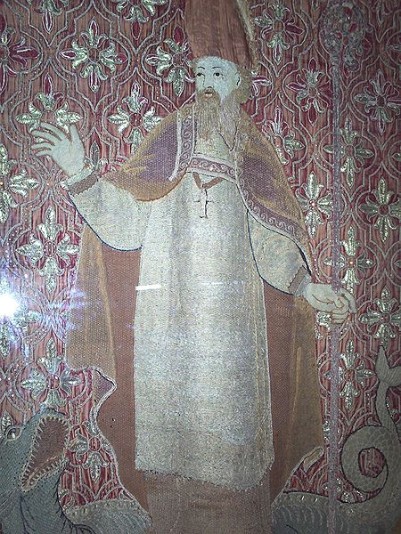Brief History of Brittany
After the collapse of the Roman Empire, large scale migration from Britain led to the foundation of British colonies linked initially to homelands in Cornwall and Wales. The independent Breton kingdom later developed into the Duchy of Brittany, before it was unified with France to become a province. After the French Revolution Brittany was abolished as an administrative unit, but continued to retain its distinctive cultural identity. Its administrative existence was reconstituted, in reduced size, as the Region of Brittany in the mid-20th century.
Breton Treasures
Pol Aorelian - Paul Aurelian (also known, in Breton as Pol Aorelian and, in Latin, as Paulinus Aurelianus) is a 6th century Welsh saint, who became one of the seven founder saints of Brittany. | Banner of St Pol at Lampaul-Guimiliau, Brittany.  |